Analysis
London Art Fair, Still Resolutely British and Still Selling Art Hand Over Fist
Colin Gleadell reviews the fair and reports the best sales.
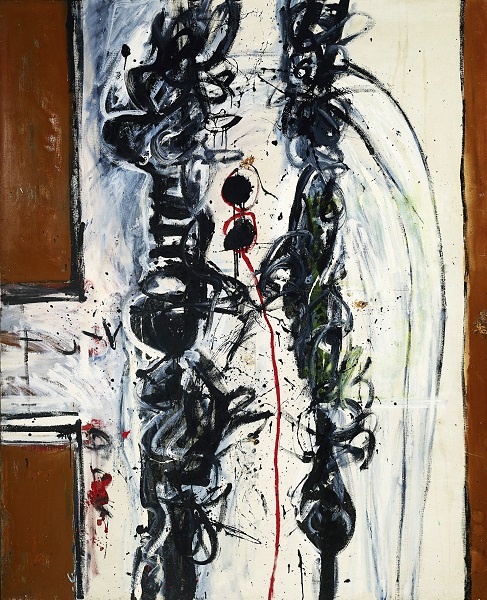
Courtesy of Goodman Fine Art
Colin Gleadell reviews the fair and reports the best sales.

Colin Gleadell


Oliver Marsden, Spiral Dub (2014), aluminium, lacquer, and plywood, sold for £17,000.
Courtesy of Vigo Gallery
The London Art Fair, which ended on the 25th and which has been held every year since 1988 by the Business Design Centre in Islington, north London, has gone through many changes since it began, and is even now a kind of hybrid event that tries to improve each year. Still, it struggles to find any cohesiveness, any underlying consistency of quality, to bind it all together. Its history tells us what it is like to teeter at the edges of a booming and receding market, and still survive.
First of all, it has always been a British event, and a first stop on the London calendar. In the early days, before there were that many internationally recognized contemporary galleries here, it was a small event, a David doing battle with ART/London—a Goliath of a contemporary fair held in west London’s Olympia by Montgomery Events. Those were promising days, but as the fair’s ambitions grew, it became clear that they were trying to capitalize on the available space to house more, but not better, galleries. They brought White Cube in, next to the entrance—and at no cost, it was said—to attract better and more international galleries, but it stayed resolutely British and mediocre.
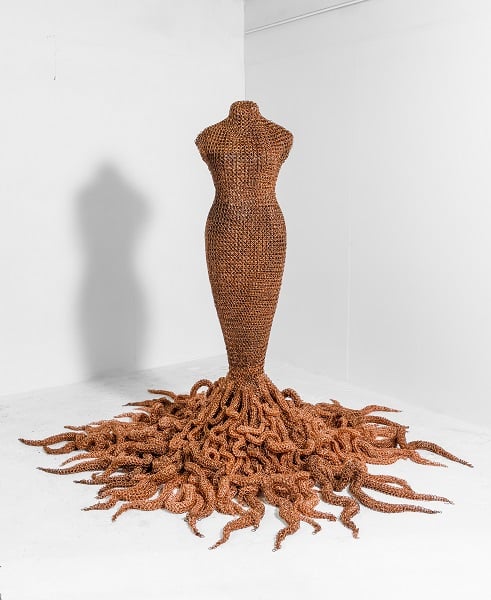
Susie MacMurray, Medusa (2014), hand-made copper rings on stainless steel and fibreglass armature, sold for £60,000.
Photo: Ben Blackall
When Frieze took off like a rocket in 2003, the London Art Fair lost its best exhibitors, and had to rebrand itself. It moved into 20th–century modern British art, and gave these more prosperous dealers the best stands in the central mezzanine level. It called itself the fair for modern British and contemporary art. It became, and still is, a fair that tries to embrace three markets—the modern British, the rather lazy and decorative contemporary, and the more challenging young contemporaries which they largely subsidize in the Arts Projects section. This is the most interesting bit for contemporary art collectors and budding curators.
This year, Ana Colin, the curator of the British Art Show, paired up a handful of galleries in a curated Dialogues section. But all this was crammed into the smallest space with a talks and discussion area (un-soundproofed), and a special section (a platform) for photography.
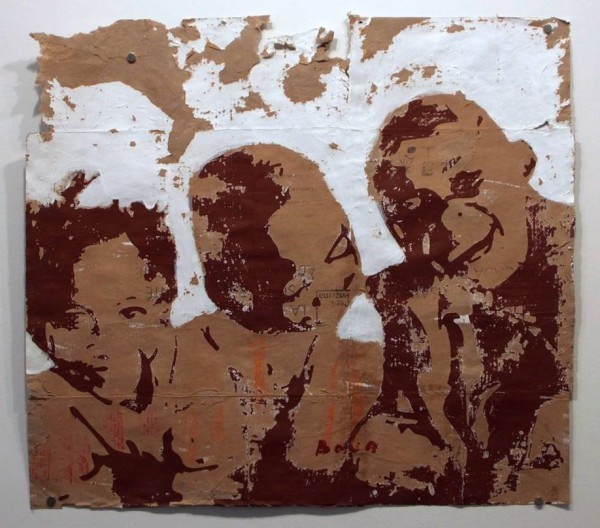
Armand Boua, Untitled (2014), tar and acrylic on cardboard, sold for £4,000.
Courtesy of Jack Bell Gallery
Before the fair opened this year, the director, Sarah Monk, told me that they did a lot of research, visited a lot of fairs—Frieze, Frieze Masters, Basel, FIAC—and borrowed elements from them all. So, there are a few VIP cars floating about the entrance, and there is a VIP viewing window in the afternoon before the official Private View. I saw a few people there, including comparatively big time dealers Jonathan and Matthew Green and Danny Katz, doing rounds of the Modern British section, and dealers said they did some of their best business then.
Contemporary collector Stuart Evans was also there, but mainly as a judge for a prize. He likes the fair and says he has bought there before, but that there is not the collector base in London to take it more international. However even the indefatigable Anita Zabludowicz, David Roberts, Frank Cohen, and Charles Saatchi, four of London’s busiest contemporary collectors, were nowhere to be seen. After the evening private view, the press office was hard pushed to give me a list of celebs. Perhaps they were all at the ICA for Clash guitarist Paul Simenon’s opening.
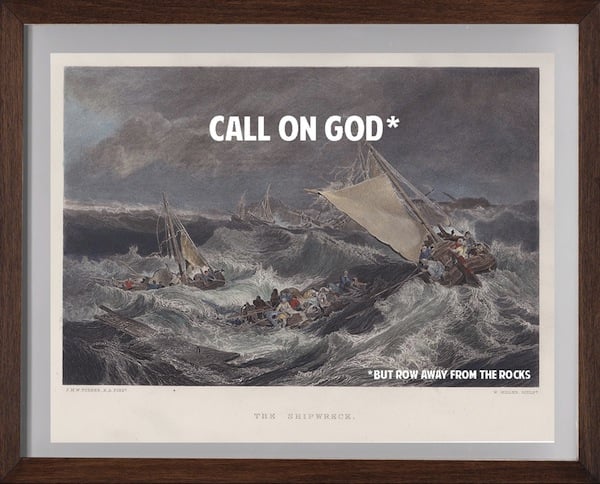
The Connor Brothers, Row Away From the Rocks, from their Pulp Fiction series, sold between £500 and £2,500.
Courtesy of Pertwee, Anderson, and Gold
The talks program, though, is filling out, if with the usual suspects from the Art Newspaper and Apollo magazine. But who is going to them? I went to one on predicting prices, given by Art Tactic, which was thorough, but a bit corporate, an advertisement for students of the Sotheby’s Institute perhaps. As I left, one elderly lady said to another: “the trouble is it’s all about money these days,” Well, it would be, wouldn’t it?
So what about sales? Were there enough to get people back? It was certainly well attended.
The biggest prices were for the modern British art, though the number of specialized dealers seems to have diminished. A 1950s painting by the recently deceased Scottish painter Alan Davie was probably the top sale, priced at £180,000 by dealer Mark Goodman followed by an Ivon Hitchens landscape at the Austin Desmond gallery with an asking price of £120,000.
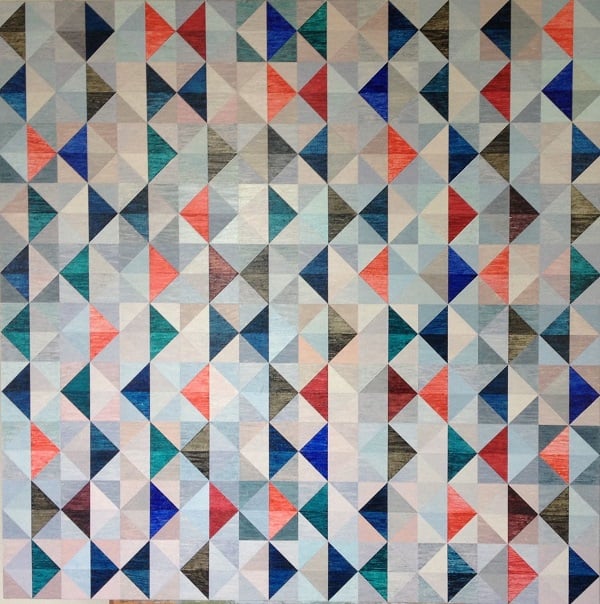
Biggs and Collings, Great Substance (2014), oil on canvas, sold between £11,000 to £26,000.
Courtesy of Vigo Gallery
Most of the fair is now devoted to contemporary art—again mostly British and at lower price points. Top price appears to have been a majestic figure, Medusa, made with handmade copper rings by Susie MacMurray, which was sold in the region of £60,000 by the out of town Merville Galleries, headed by former Waddington Galleries director, Tom Lighton.
Toby Clarke of the Vigo gallery was nursing an injured shoulder, but celebrating a successful application to Frieze New York. “The key to getting into Frieze…,” he was about to tell me, when the umpteenth person of the day started touching the £95,000 black Jason Martin painting. “Oh, my God, she’s going to start kissing it,” he yelped, clutching his shoulder as he leapt up to intervene. Anyway, he sold two jazzy, geometrical abstracts by the art critic Matthew Collings and his wife, Emma Biggs, priced in the £11,000 to £26,000 range, and a shiny aluminium disc by Ollie Marsden for £17,000. Back at the gallery his show for Kadar Brock had completely sold out, so he wasn’t complaining.
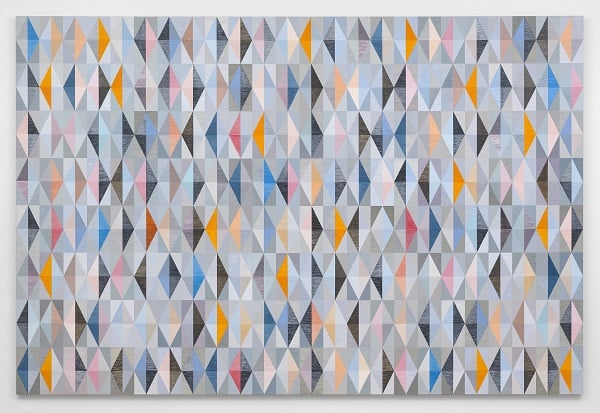
Biggs and Collings, Land of the Living (2014), oil on canvas, sold between £11,000 to £26,000.
Courtesy of Vigo Gallery
Another sharp young dealer is Jack Bell selling African art. Last year he crammed his stand and sold loads, but this year he’d gone minimal—only a handful of artists, and sold enough, if not as many, by Aboudia, now up to £12,500, and Armand Boua, a new find from the Ivory Coast, with scraped off paintings like the French ‘affichiste’ artists for just £4,000 each.
Just next door, Pertwee, Anderson, and Gold were selling hand over fist. Prime culprits were the Connor Brothers, aka art dealers Mike Snelle, the founder of the Black Rat Press, and James Golding (the Gold in Pertwee, Anderson etc.,) who had managed to keep their true identities a secret until just a few months ago. Over 20 of their painted Mills and Boon book covers and almost half as many slogan bearing biblical engravings had sold between £500 and £2,500. Nancy Fouts, an American artist who, having been through the design and advertising treadmill, has adopted a catchy, humorous surreal style, was also a big seller. Her typical Bird on a Turntable from an edition of 10 sold for £3,125—manageable surrealism.
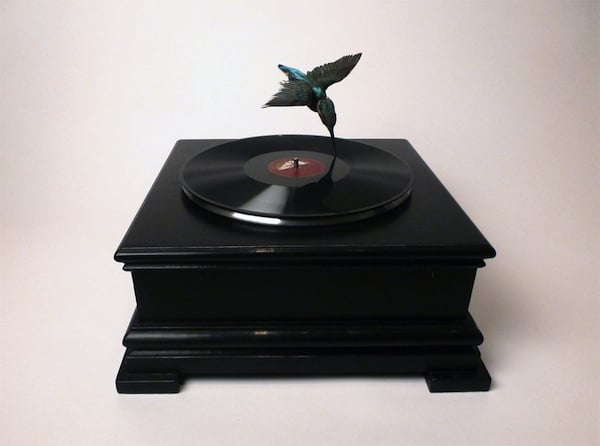
Nancy Fouts, Bird on a Turntable, sold for £3,125.
Courtesy of Pertwee, Anderson, and Gold
Upstairs, I passed the maze of Affordable Art Fair style booths and made for Art Projects. Here the atmosphere was slower and more contemplative, too much so to even think about the market, until I got to the Bearspace booth where a collector was buying a print of a kind of scraped back, Richter style, fantasy Shangri La by Jane Ward. She was filling in an Own Art form so she only had to pay £99 a month for 10 months, with no interest on top. “That’s how we students buy,” said a helpful girl on the stand. Then I saw the sea of red dots on the wall—three for the giclee prints of collaged landscapes by Suzanne Moxhay at £340, and three for a lightbox version at £3,400; seven hyppereal paintings of fabric on wood by Alastair Gordon at £940, and more for Janie Kidstone and the Flea Folly Architects.

Alan Davie, Anamorphic Figures 1 (1958) sold for £180,000.
Courtesy of Goodman Fine Art
So, Bearspace and its artists were happy and so was the Multiple Store on my way out. They had sold at least one example of all 28 multiples on show. These included a phallic looking kaleidoscope by Yinka Shonibare at £3,000, and three Dioramas by Sigune Hamann at £950 each.
This is quite an insular, parochial fair with plenty of reasonable quality modern and contemporary art for the locals. Some of it should go, though. Smaller would definitely be better. And that would also make good marketing sense. And if they shifted the dates back a couple of weeks to coincide with the international modern and contemporary art auctions…who knows? That’s what Frieze did.
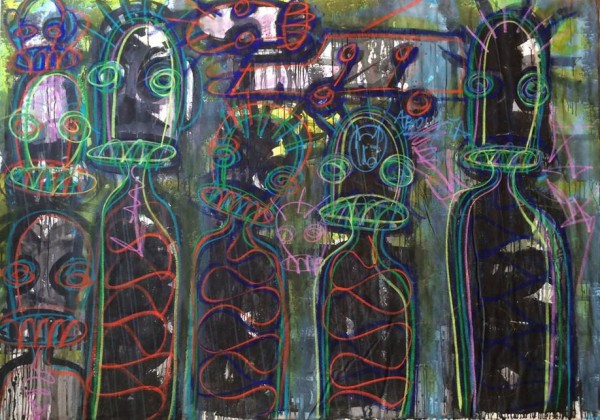
Aboudia, Untitled (2014), acrylic and mixed media on canvas.
Courtesy of Jack Bell Gallery